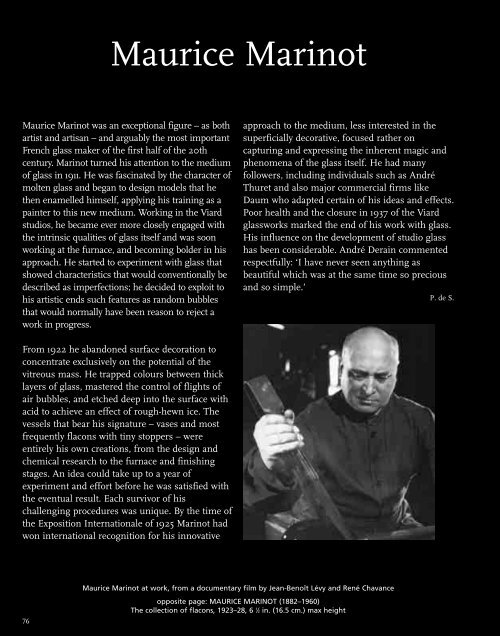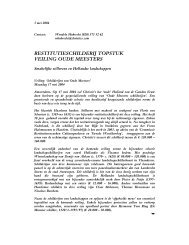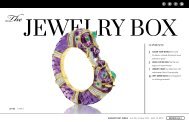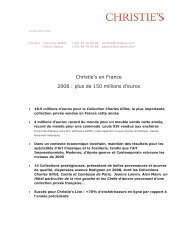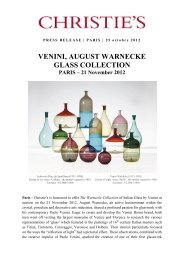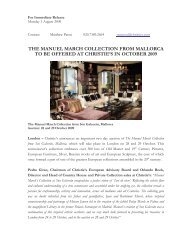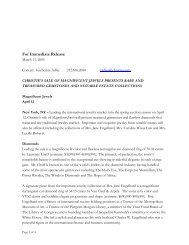Yves Saint Laurent Pierre Bergé - Christie's
Yves Saint Laurent Pierre Bergé - Christie's
Yves Saint Laurent Pierre Bergé - Christie's
You also want an ePaper? Increase the reach of your titles
YUMPU automatically turns print PDFs into web optimized ePapers that Google loves.
Maurice Marinot was an exceptional figure – as both<br />
artist and artisan – and arguably the most important<br />
French glass maker of the first half of the 20th<br />
century. Marinot turned his attention to the medium<br />
of glass in 1911. He was fascinated by the character of<br />
molten glass and began to design models that he<br />
then enamelled himself, applying his training as a<br />
painter to this new medium. Working in the Viard<br />
studios, he became ever more closely engaged with<br />
the intrinsic qualities of glass itself and was soon<br />
working at the furnace, and becoming bolder in his<br />
approach. He started to experiment with glass that<br />
showed characteristics that would conventionally be<br />
described as imperfections; he decided to exploit to<br />
his artistic ends such features as random bubbles<br />
that would normally have been reason to reject a<br />
work in progress.<br />
From 1922 he abandoned surface decoration to<br />
concentrate exclusively on the potential of the<br />
vitreous mass. He trapped colours between thick<br />
layers of glass, mastered the control of flights of<br />
air bubbles, and etched deep into the surface with<br />
acid to achieve an effect of rough-hewn ice. The<br />
vessels that bear his signature – vases and most<br />
frequently flacons with tiny stoppers – were<br />
entirely his own creations, from the design and<br />
chemical research to the furnace and finishing<br />
stages. An idea could take up to a year of<br />
experiment and effort before he was satisfied with<br />
the eventual result. Each survivor of his<br />
challenging procedures was unique. By the time of<br />
the Exposition Internationale of 1925 Marinot had<br />
won international recognition for his innovative<br />
76<br />
Maurice Marinot<br />
approach to the medium, less interested in the<br />
superficially decorative, focused rather on<br />
capturing and expressing the inherent magic and<br />
phenomena of the glass itself. He had many<br />
followers, including individuals such as André<br />
Thuret and also major commercial firms like<br />
Daum who adapted certain of his ideas and effects.<br />
Poor health and the closure in 1937 of the Viard<br />
glassworks marked the end of his work with glass.<br />
His influence on the development of studio glass<br />
has been considerable. André Derain commented<br />
respectfully: ‘I have never seen anything as<br />
beautiful which was at the same time so precious<br />
and so simple.’<br />
P. de S.<br />
Maurice Marinot at work, from a documentary film by Jean-Benoît Lévy and René Chavance<br />
opposite page: MAURICE MARINOT (1882–1960)<br />
The collection of flacons, 1923–28, 6 1 ⁄2 in. (16.5 cm.) max height


